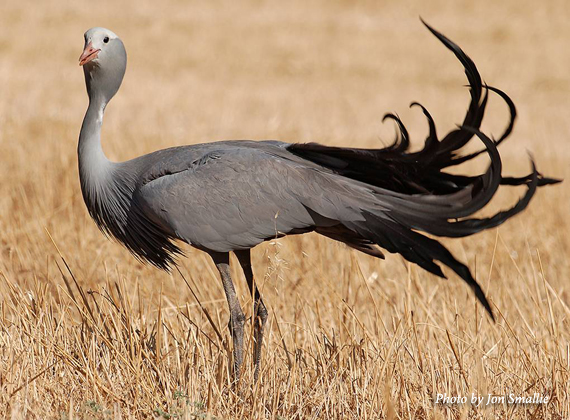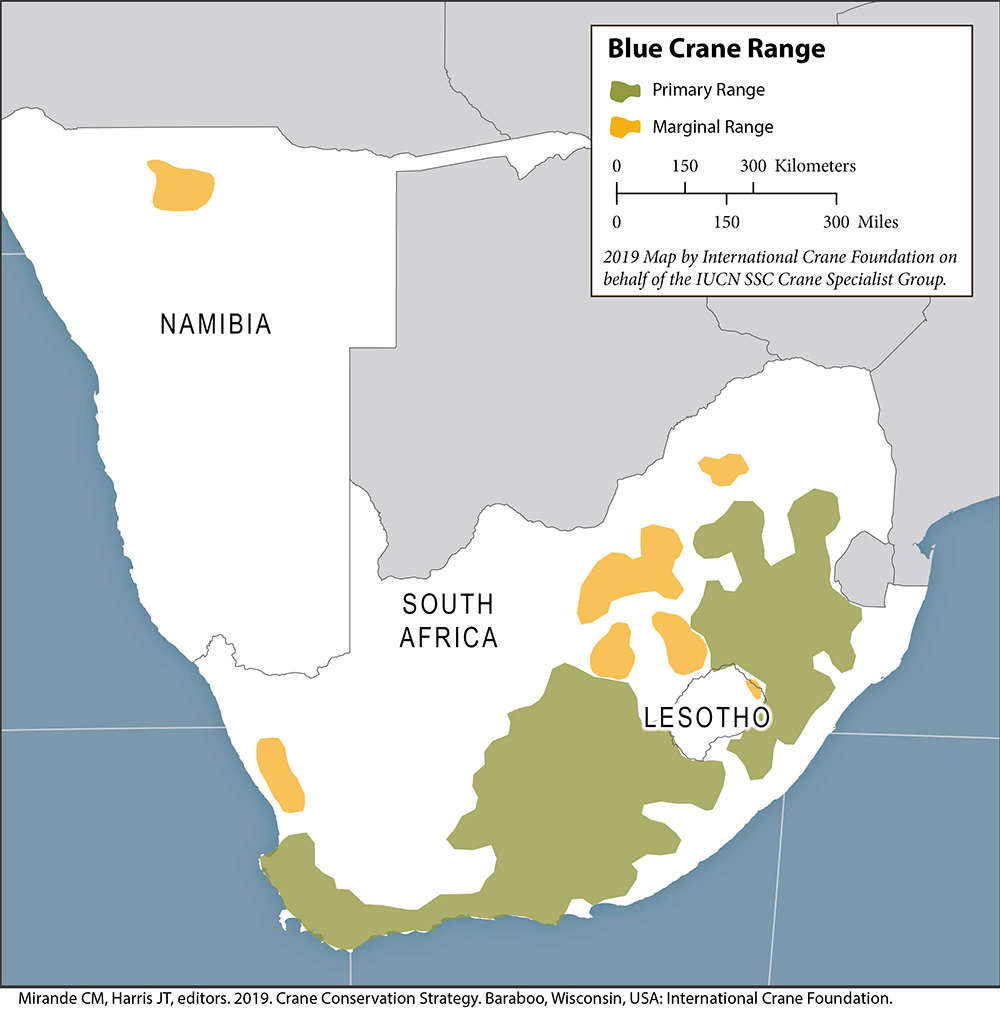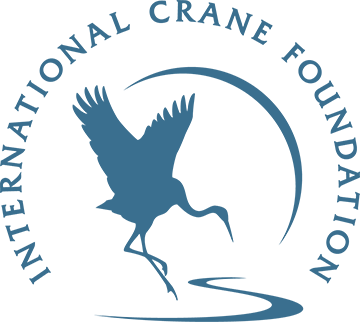
SPECIES: Anthropoides paradiseus
HEIGHT: 117 cm, 4 ft
WEIGHT: 5.1 kg, 11 lbs
POPULATION: 25,000 – 30,000
TREND: Western Cape population increasing; Karoo and Grasslands populations stable; Namibian population decreasing
STATUS: IUCN: VU; Cites Appendix II; CMS II
IDENTIFICATION
Adults – Body is silvery bluish gray, black wingtips, extra-long tertial feathers that are dark and dangle nearly to the ground, black legs; juveniles – slightly lighter blue-grey feathers.
RANGE
Endemic (only found in a certain region) to southern Africa, with more than 99% of the population occurring within South Africa. A small, disjunct breeding population exists in northern Namibia, in and around Etosha Pan.

DIET
Seeds of sedges and grasses, waste grains, insects and small vertebrates.
CALL
Listen to Blue Crane calls:
![]() Guard Call | A sharp, single call expressing alarm.
Guard Call | A sharp, single call expressing alarm.
![]() Unison Call | A duet performed by a pair, to strengthen their bond and protect their territory.
Unison Call | A duet performed by a pair, to strengthen their bond and protect their territory.
THREATS
Changes in agriculture practices, power line collisions, human disturbance, unintentional and intentional poisoning, land conversion, live capture and egg collection for commercial trade.
OUR PLAN
Conserving Blue Cranes on agricultural landscapes in South Africa. We are:
- Developing and implementing a conservation plan for Blue Cranes, based on a clear understanding of how cranes use the agricultural systems in the Western Cape and the probable impacts of climate change on land use and agricultural practices.
- Seeking to minimize the impact of mining and other land development on critical Blue Crane breeding and roosting sites.
- Implementing a media and marketing campaign to honor Blue Cranes as the national bird in South Africa, a designation that will drive public engagement in their protection.
Learn more about Blue Cranes:
